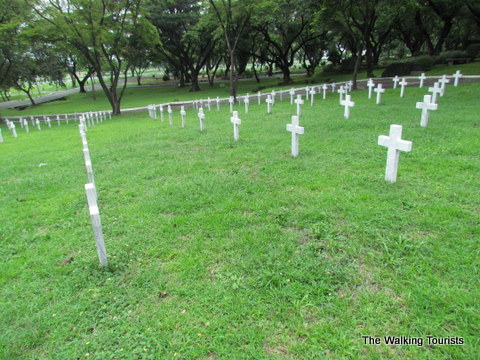Filipino heroes immortalized with monuments

The Philippines has a long history of having to overcome oppressive regimes, bent on denying freedom for the citizens.
The country has been controlled by the Spanish, Japanese and Americans. The United States, having defeated the Spanish during the 1898 war, managed the Philippines until 1946, when the nation was granted its independence from all colonialists. It later went through decades of oppression from its own governments.
As with revolutions, people grew into heroic roles.
The “Father of the Filipino Revolution” is considered to be Andres Bonifacio. He played an integral role in the Filipino revolution against Spain in the 1890s.
A monument honoring Bonafacio and the Katipunan (People’s Party – KKK) is located not far from the Manila city hall building.
Nearby, a memorial honors the people who were killed or disappeared during Martial Law under the Ferdinand Marcos reign. Marcos, who was “President” of the Philippines 1965-86, declared Martial Law in 1972. It officially ended in the early 1980s, but was believed to continue until his removal from office in 1986 during the “People’s Power Revolution.”
Corazon Aquino was elected to replace Marcos as President in 1986. She served until 1992, having been re-elected. She was the widow of former Senator Benigno Aquino. He was assassinated upon returning to the Philippines in 1983 following a self-exile. Their son is the current President.
Senator Aquino is memorialized with a statue as part of the People’s Power Revolution sculpture. The monument was about a mile or so from my hotel when I was in the Manila area on business in 2011.
In addition, the EDSA (Epifanio de los Santos Avenue) Shrine houses a small Catholic church, and is a monument to the People’s Power Revolution.
The most famous and respected national hero may be Jose Rizal. Rizal, a doctor and novelist, is considered the “national hero.” He was jailed by the Spanish in early 1896. He was kept at a jail at Fort Santiago inside Intramuros, the original location of Manila. He continued writing during his imprisonment.
Rizal was executed Dec. 30, 1896 on what is now known as Rizal Park. His remains are kept inside a tomb, known as the Rizal Monument, under armed guard around the clock. The federal government opens the tomb for visitation occasionally for public viewing.
Intramuros was the location for the slaughter of about 600 Filipinos by the Japanese during World War II. A memorial near the execution site honors the victims.
The Filipino military cemetery is located a short drive from the American military cemetery. While, the design and care may not be on the same level, the appreciation for theses heroes is the same.
The Filipinos honor an unknown soldier with a beautiful memorial – the Tomb of the Unknown – near the cemetery’s entrance.
Based on my experience and knowledge, the Philippines continue to grow as a democracy. But, with enjoying democracy for less than 30 years, the nation suffers growing pains. As it grows, more national heroes will likely emerge. I truly enjoyed learning about these heroes and having the opportunity to see the monuments to them.













